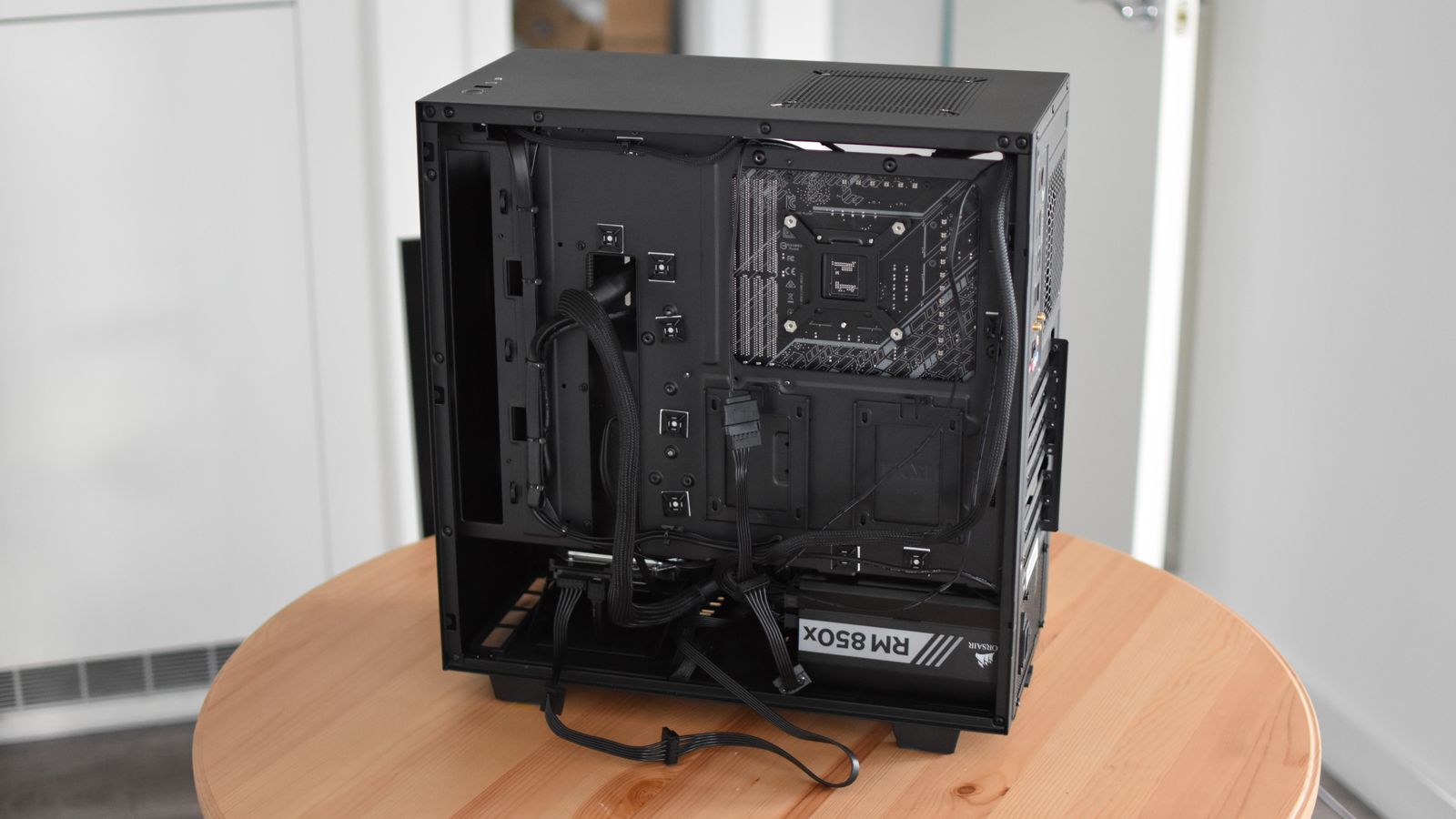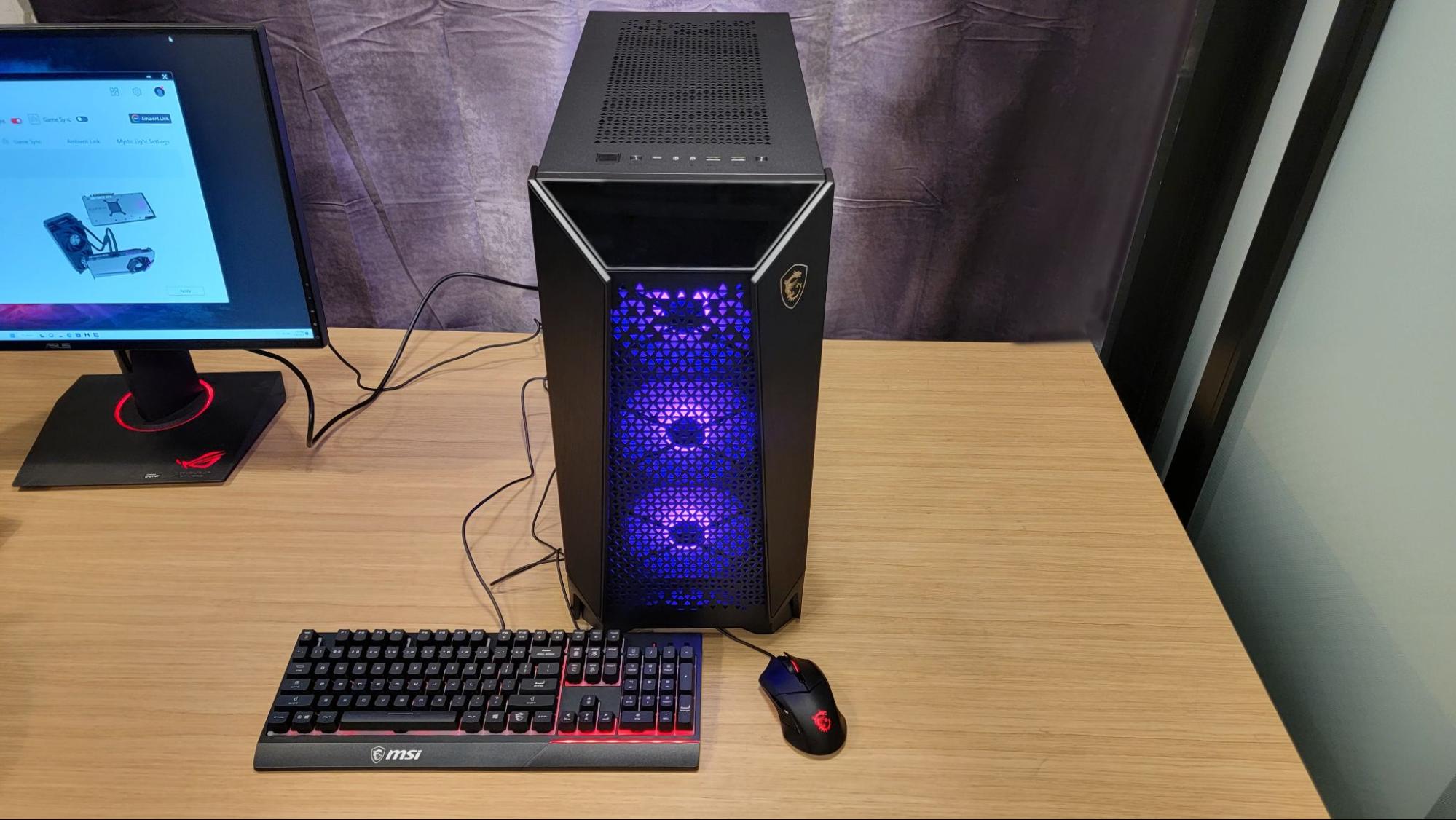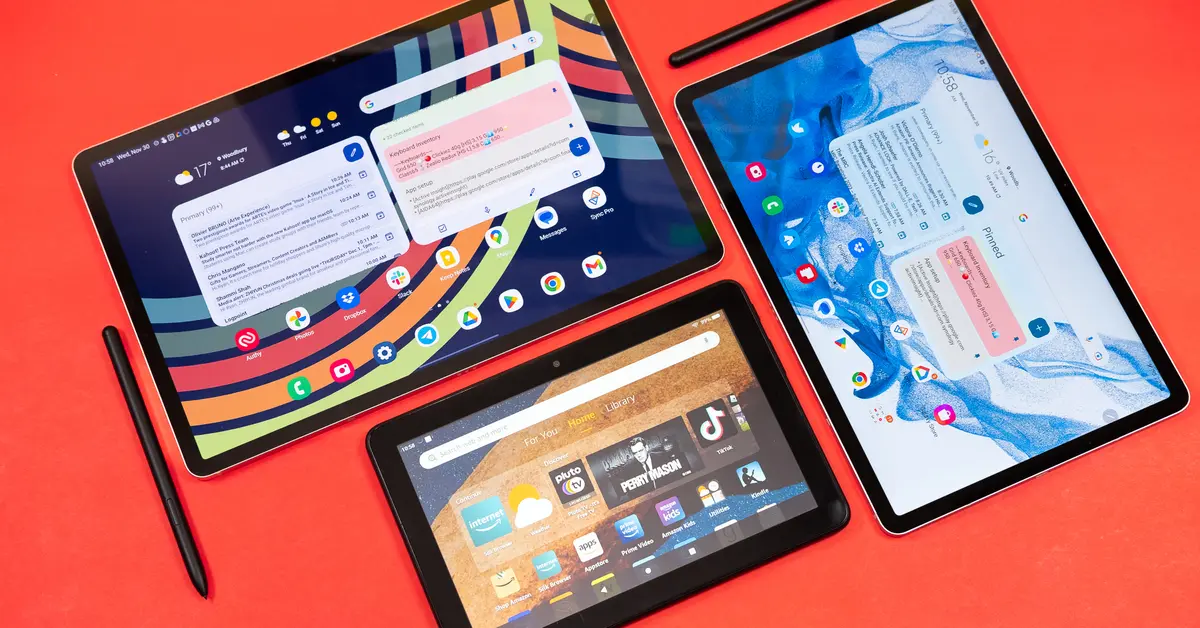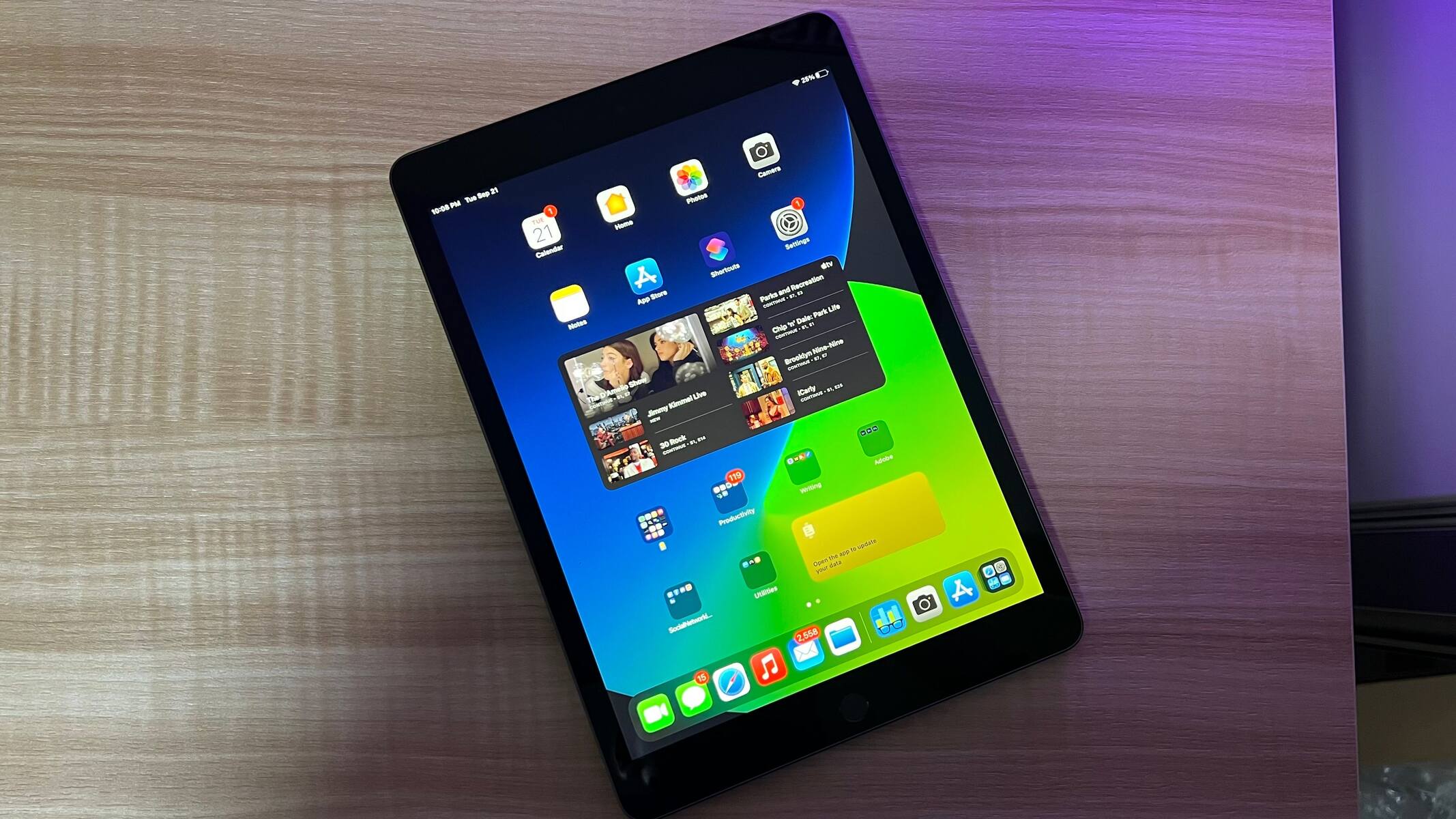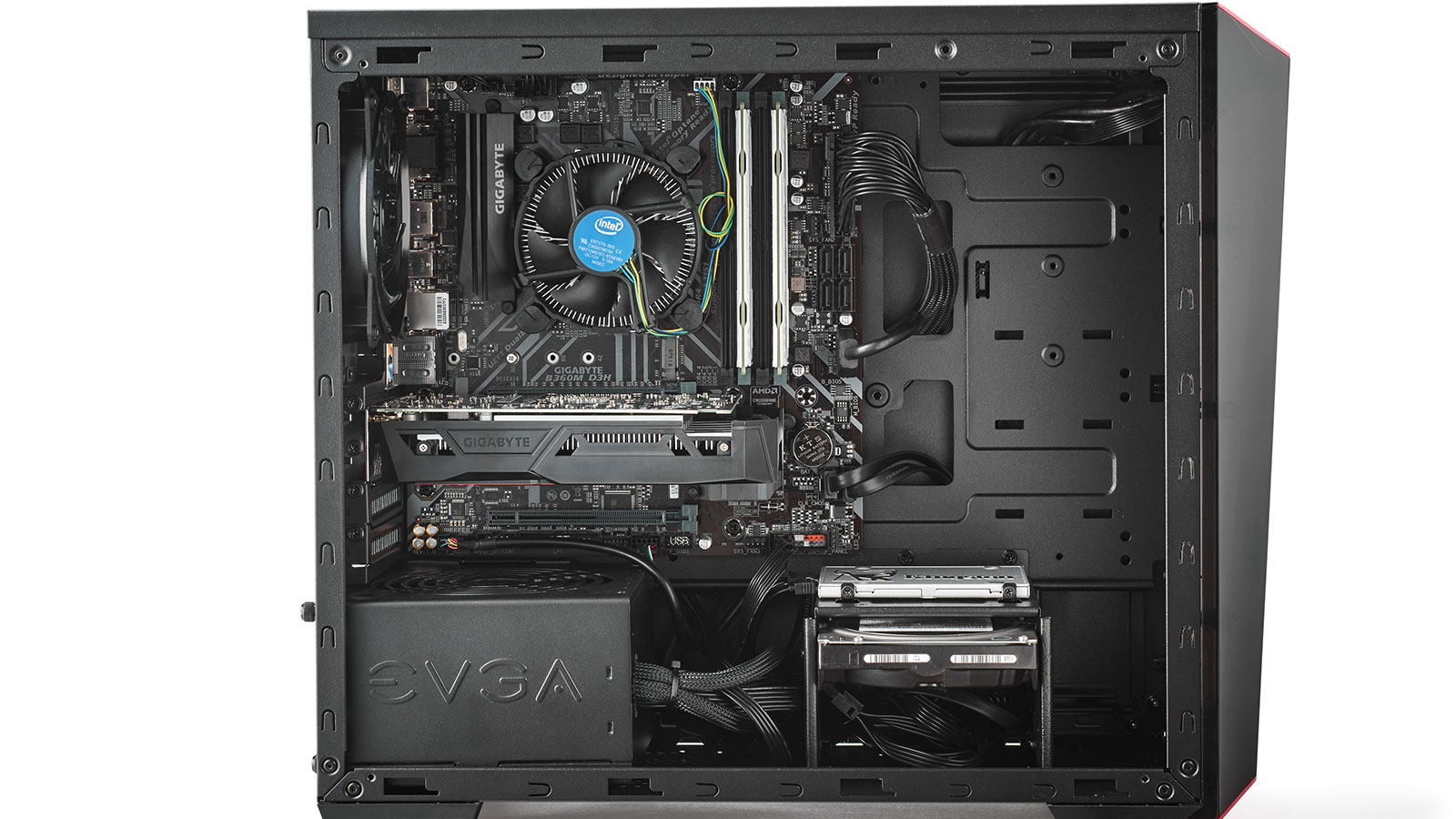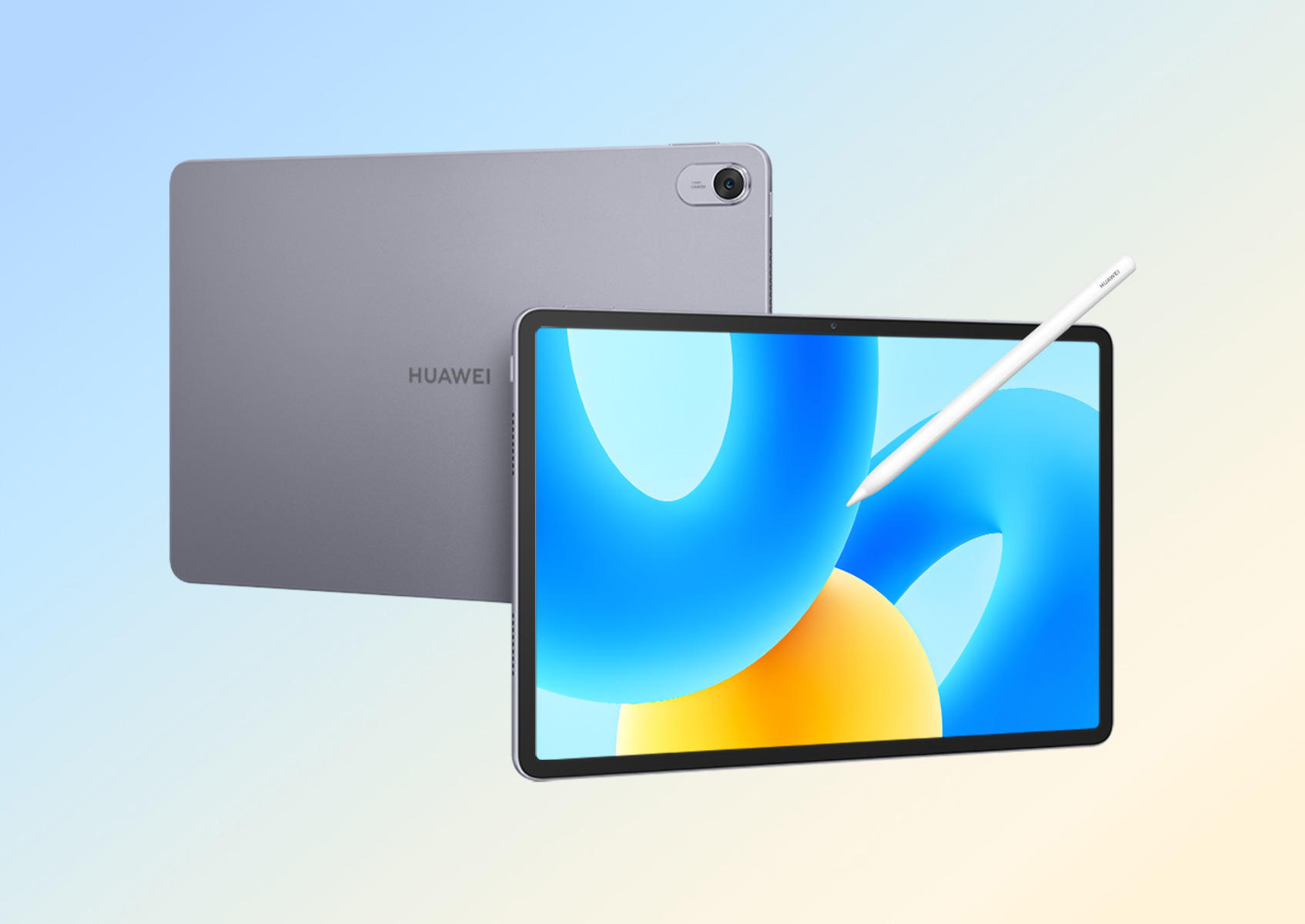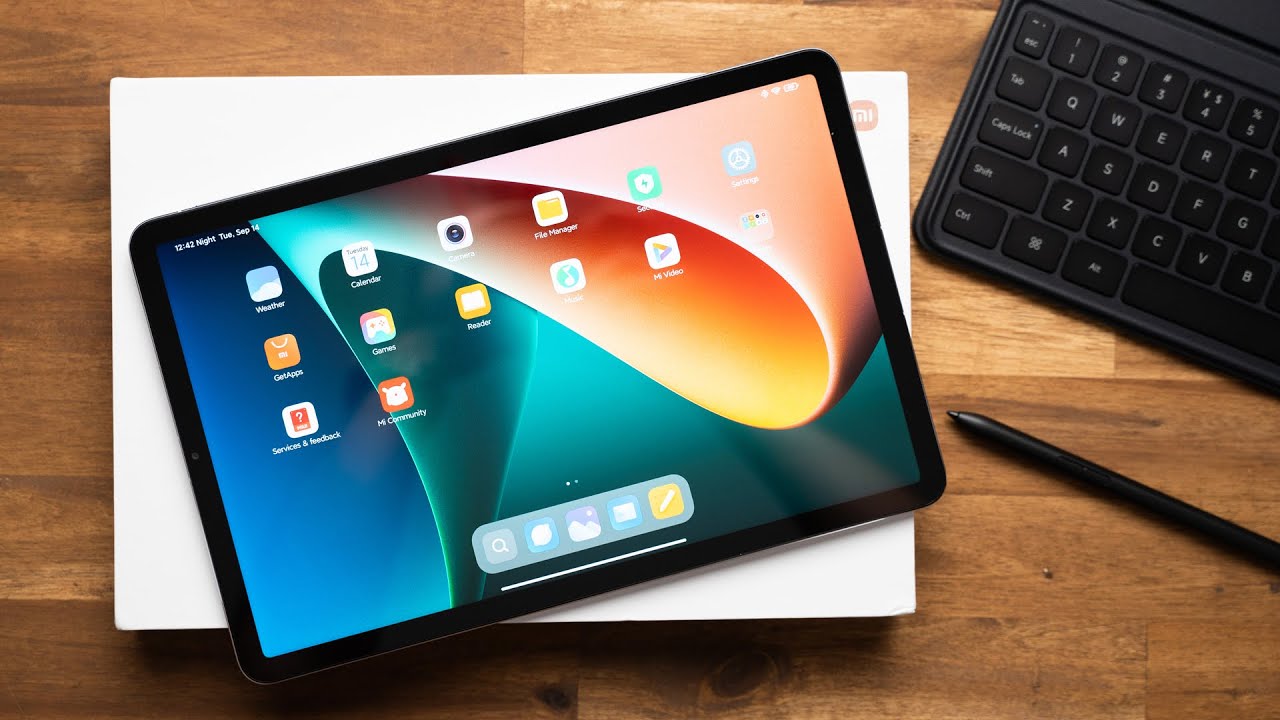Introduction
When it comes to personal computers, the front of the PC case often features a variety of connectors and buttons that serve different purposes. These components not only enhance the functionality of the computer but also provide easy access to various peripherals and controls. In this article, we will explore the different components and connectors found on the front of a PC case.
Modern PC cases are equipped with a multitude of features and options that make them more user-friendly and convenient. From USB ports to card reader slots, these components allow users to connect external devices, transfer data, and control the computer effortlessly.
Understanding the purpose of each component on the front of a PC case can be essential, especially when it comes to connecting devices or troubleshooting any issues. Let’s dive into the various components you might find on the front of your PC case and how they contribute to your computing experience.
Note: The specific components and connectors on the front of a PC case can vary depending on the model and manufacturer. Therefore, it’s always recommended to consult the user manual or the manufacturer’s website for accurate information regarding your specific PC case.
USB Ports
USB (Universal Serial Bus) ports are a common feature on the front of PC cases. These ports allow you to connect various USB devices such as flash drives, keyboards, mice, and external hard drives to your computer. USB ports are incredibly versatile and have become the standard method of connecting peripheral devices to computers.
The number of USB ports on the front of a PC case can vary depending on the model and design. Some cases may have just a couple of USB ports, while others may offer multiple ports to accommodate several devices simultaneously. USB 2.0 and USB 3.0 are the most common types of USB ports found on PC cases, with USB 3.0 offering faster data transfer speeds.
Having USB ports on the front of your PC case can be highly convenient, allowing you to quickly connect and disconnect devices without having to reach around to the back of your computer. This is particularly useful for frequently used devices like USB thumb drives or charging cables for smartphones and tablets.
Furthermore, USB ports on the front of a PC case can serve as a hub, enabling you to daisy-chain additional USB devices. This means that you can connect multiple devices via a single USB port, using a USB hub or a docking station. This feature is especially useful if you have limited USB ports on the back of your computer.
Overall, USB ports on the front of a PC case provide exceptional convenience and flexibility for connecting a wide range of devices. Whether you need to transfer files, charge your mobile devices, or connect peripherals, having easily accessible USB ports on the front of your PC case can greatly enhance your computing experience.
Audio Jacks
Audio jacks are another common feature found on the front of PC cases. These jacks allow you to connect headphones, speakers, and microphones to your computer. They provide a convenient way to enjoy audio without having to reach around to the back of your PC.
The most commonly found audio jacks on the front of PC cases are the headphone jack and microphone jack. These are commonly color-coded with green for the headphone jack and pink for the microphone jack. Using these jacks, you can easily listen to music, watch videos, or participate in voice chats without the need for additional adapters or extensions.
Having audio jacks on the front of your PC case is particularly handy if you frequently use headphones or have external speakers. It eliminates the need to navigate through a tangle of cables at the back of your computer and makes it easier to plug and unplug audio devices.
It is worth noting that some PC cases may also feature additional audio jacks, such as line-in or line-out jacks. These additional jacks allow you to connect devices like external sound cards, musical instruments, or audio mixers directly to your PC without having to reach around to the back of the computer.
Furthermore, some PC cases may feature front panel audio connectors, which serve as internal connectors for your computer’s audio output and input. These connectors allow you to easily connect the audio wires from your PC case to the motherboard, ensuring seamless audio functionality.
In summary, audio jacks on the front of a PC case provide a convenient way to connect headphones, speakers, and microphones to your computer without having to reach around to the back of the machine. They enhance the audio experience and make it easier to connect and disconnect audio devices, adding convenience and flexibility to your PC usage.
Power and Reset Buttons
The power and reset buttons are two essential components on the front of a PC case that allow you to control the computer’s power status. These buttons provide a quick and convenient way to turn on and off your computer, as well as initiate a system reset if needed.
The power button, usually represented by a circle with a vertical line inside, is used to turn the computer on or off. Simply press the power button to start your computer, and press and hold it for a few seconds to shut down the system. The placement and design of the power button can vary between PC cases, but it is typically easily accessible on the front panel for convenient operation.
The reset button, often represented by a smaller circle with an arrow looping back on itself, is used to perform a system reset. Pressing the reset button sends a signal to the computer to restart, allowing you to troubleshoot issues or perform a soft reset if your computer becomes unresponsive. The reset button is particularly useful when you need to quickly reboot your system without the need to turn it completely off and on again.
Having power and reset buttons on the front of your PC case offers several advantages. Firstly, it eliminates the need to reach around to the back of your computer to power it on or off, making it more user-friendly. Additionally, in cases where your computer freezes or encounters errors, having a conveniently placed reset button allows you to quickly resolve the issue without disruption.
It is important to note that the power and reset buttons are typically connected to the motherboard of your computer via internal wires. This connection ensures that pressing the buttons triggers the desired actions within the system. Therefore, it is crucial to handle and press these buttons with care to avoid any accidental triggering or damage to the internal components.
Overall, the power and reset buttons on the front of a PC case play a crucial role in controlling the power state of your computer. They provide a convenient way to turn your computer on and off, as well as perform a system reset when necessary, enhancing the user experience and simplifying troubleshooting processes.
LED Indicators
LED (Light-Emitting Diode) indicators are small lights located on the front of a PC case that provide visual feedback on the status of various components or functions. These indicators use different colors and flashing patterns to convey information about the computer’s operations.
LED indicators can vary depending on the specific PC case model and manufacturer, but some of the common indicators you might find include:
- Power Indicator: This LED indicates whether the computer is powered on or off. It is usually located near the power button and glows when the computer is turned on.
- Hard Drive Activity Indicator: This LED blinks or flashes when the hard drive is being accessed, indicating data read or write activity.
- Network Activity Indicator: Some PC cases include an LED that shows network activity, such as data transfers or internet connectivity status.
- USB Port Indicator: Some PC cases have LEDs next to the USB ports to indicate whether they are active or connected to a device.
- Fan Activity Indicator: In cases with built-in fans, there may be LED indicators that show the fan’s operational status, such as spinning or idle.
The purpose of LED indicators is to provide users with a quick visual reference for monitoring the status and activity of their computer. These indicators are particularly useful in identifying any issues or confirming that certain functions are working as intended.
LED indicators are designed to be easily visible and distinguishable. The different colors or flashing patterns help differentiate between various states or functions. For example, a solid green light on the power indicator might indicate that the computer is turned on, while a blinking amber light might suggest that the system is in sleep mode.
Although LED indicators are generally user-friendly and informative, it is important not to solely rely on them for troubleshooting. They offer a quick glance at the system’s status, but they do not provide detailed information about specific errors or hardware malfunctions. In case of any issues, it is recommended to consult the computer’s documentation or diagnostic tools for a more accurate diagnosis.
In summary, LED indicators on the front of a PC case provide visual feedback on various components or functions. They help users monitor the status and activity of their computer, enhancing the overall user experience and aiding in troubleshooting processes.
Fan Controls
Fan controls are a feature found on some PC cases that allow users to adjust the speed and performance of the fans inside the computer. These controls provide the ability to regulate airflow, maintain optimal temperatures, and reduce noise levels.
Fans are essential components in a computer system, as they help dissipate heat generated by the various hardware components. They are usually located inside the PC case and can include fans for the CPU, graphics card, and case ventilation. The speed at which these fans operate can have a significant impact on the overall performance and lifespan of the components.
Fan controls on the front of a PC case come in different forms. One common type is a physical knob or slider that allows users to manually adjust the fan speed. By increasing or decreasing the speed, users can fine-tune the cooling performance according to their specific needs. This feature is particularly helpful when running resource-intensive tasks that generate high heat levels or when needing to minimize noise during light usage.
Additionally, some PC cases feature fan control buttons that cycle through preset fan speed profiles. These profiles typically include options such as “Silent,” “Normal,” and “Performance,” each offering different cooling and noise levels. Users can simply press the corresponding button to switch between the profiles and achieve the desired balance between cooling and noise reduction.
Furthermore, advanced PC cases may offer fan controls through software applications or by connecting the case to the motherboard’s fan control system. In such cases, users can adjust the fan speed and monitor the temperatures through the software interface, providing greater control and customization options.
Having fan controls on the front of a PC case is advantageous as it allows users to make real-time adjustments without the need to open the case. This convenience not only simplifies the cooling management process but also helps maintain stable system temperatures for optimal performance and longevity of the components.
It is important to note that while fan controls provide flexibility and customization options, it is crucial to monitor the temperatures and ensure that adequate cooling is maintained. Overheating components can lead to performance issues and potential damage to hardware. Therefore, finding the right balance between temperature control and noise reduction is essential for the overall health of the system.
In summary, fan controls on the front of a PC case provide users with the ability to adjust the fan speed and optimize cooling performance. They offer convenience, customization, and the ability to strike a balance between effective cooling and reduced noise levels, contributing to an enhanced computing experience.
Card Reader Slots
Card reader slots are a convenient feature found on the front of some PC cases, allowing users to easily read and transfer data from memory cards. These slots provide compatibility with a variety of memory card formats, making it effortless to access and transfer data from devices such as digital cameras, smartphones, and tablets.
Memory card formats can vary, but common ones include Secure Digital (SD), microSD, CompactFlash (CF), and Memory Stick. PC cases with card reader slots typically support multiple formats, providing versatility and compatibility for various memory cards.
The card reader slots are designed to be plug-and-play, meaning you can simply insert your memory card into the appropriate slot and access its contents without the need for additional adapters or cables. This feature is particularly useful for photographers, content creators, or anyone who frequently transfers files from memory cards to their computer.
Once the memory card is inserted into the card reader slot, the computer recognizes it as a storage device, allowing you to access the files and folders just like any other external storage device. You can copy, move, or delete files, making it convenient to manage your data directly from the memory card.
Card reader slots are advantageous as they eliminate the need to connect your devices directly to the computer or use separate card readers. This can save time, reduce clutter, and provide a more organized workspace. Additionally, accessing memory cards through the card reader slots on the front of a PC case is often faster and more reliable than using built-in card readers on laptops or external USB card readers.
It’s important to note that while many PC cases come with built-in card reader slots, not all cases include this feature. Therefore, it’s essential to check the specifications of your PC case or consult the manufacturer’s website to determine if your case has card reader slots.
In summary, card reader slots on the front of a PC case offer a convenient and efficient way to access and transfer data from memory cards. They eliminate the need for separate card readers or connecting devices directly to the computer, providing a more streamlined and organized workflow.
eSATA Ports
eSATA (external Serial Advanced Technology Attachment) ports are a type of connector found on the front of some PC cases that allow for high-speed data transfer between the computer and external storage devices. eSATA ports provide a convenient and reliable way to connect external hard drives, solid-state drives (SSDs), and other storage devices.
eSATA ports offer faster data transfer rates compared to traditional USB ports, making them ideal for transferring large files or working with high-bandwidth applications. These ports typically support transfer speeds up to 6 Gbps, allowing for quick and efficient data transfers.
The eSATA port on the front of a PC case is easily identifiable by its unique shape and design. It resembles a slightly larger version of a standard SATA data connector found inside a computer. To connect an external storage device via eSATA, you simply plug in the eSATA cable from the device into the eSATA port on the PC case, providing a secure and reliable connection.
One of the advantages of using eSATA ports is that they allow for “hot-swapping” of external storage devices. This means you can connect and disconnect eSATA devices while the computer is running without the need to restart or power off the system. This convenience makes it easy to quickly access or transfer data from different external drives as needed.
Another benefit of eSATA ports is that they provide native and dedicated connectivity for storage devices. Unlike USB ports, eSATA is designed specifically for high-speed data transfer, making it an excellent choice for professionals who work with large files or require fast backup and recovery solutions.
It’s worth noting that eSATA ports may require an external power supply for certain devices that do not have their power source. In such cases, make sure to check the power requirements of your external storage device and have the appropriate power supply connected.
In summary, eSATA ports on the front of a PC case offer a fast, reliable, and dedicated solution for connecting external storage devices. They provide high-speed data transfer rates and allow for hot-swapping of devices, making them a valuable tool for professionals and users who require efficient storage solutions.
Firewire Ports (IEEE 1394)
Firewire ports, also known as IEEE 1394 ports, are a type of connector found on the front of some PC cases. These ports are designed for high-speed data transfer and provide a reliable connection for devices such as digital cameras, camcorders, and audio interfaces.
Firewire is a technology developed by Apple that allows for fast data transfer rates and real-time device synchronization. These ports are particularly popular in the professional audio and video production industries, where low latency and high-bandwidth requirements are critical.
The distinctive feature of Firewire ports is their unique shape and design. They typically have a rectangular shape with a slightly rounded corner and a small notch on one side. Firewire cables have a corresponding connector that fits securely into the port, ensuring a stable connection.
One of the key advantages of Firewire ports is their ability to provide both data transfer and power supply to connected devices. This feature eliminates the need for separate power adapters and simplifies the setup process. For example, when connecting a digital camera to a Firewire port, it can not only transfer data but also draw power from the port to charge the camera’s battery.
Firewire ports are often found in PC cases used for multimedia applications, where fast and reliable data transfer is crucial. They offer fast transfer speeds, typically ranging from 400 Mbps to 800 Mbps, allowing for efficient data transfer of large files or real-time streaming of audio and video content.
It’s important to note that Firewire ports have become less common in recent years, gradually being replaced by other interfaces such as USB and Thunderbolt. However, many older devices still utilize Firewire connectivity, and some professional-grade equipment continues to rely on Firewire for its reliable and high-performance capabilities.
If your PC case has Firewire ports on the front, it is worth considering their compatibility with your devices and the specific requirements of your workflow. Firewire can provide seamless integration with certain audio and video equipment, making it a valuable port for professionals in those fields.
In summary, Firewire ports, or IEEE 1394 ports, found on the front of some PC cases offer high-speed data transfer and real-time device synchronization. While they have become less common in recent years, they still play a crucial role in certain industries and offer reliable connectivity for compatible devices.
Expansion Slots
Expansion slots are a vital component found on the front of a PC case that allows users to add additional functionality and upgrade their computers. These slots provide the ability to install expansion cards, which enhance the capabilities of the system and accommodate various hardware components.
Expansion slots are typically located on the front or back of the PC case and are often covered by metal brackets or plates. These brackets can be easily removed using a screwdriver to access the slots. The most common type of expansion slot is the Peripheral Component Interconnect Express (PCIe) slot, which is found in modern PCs.
PCIe slots come in different sizes, including PCIe x1, PCIe x4, and PCIe x16. The “x1,” “x4,” or “x16” designation refers to the number of data lanes available for data transfer. A larger number of lanes generally indicates a higher bandwidth, allowing for faster data transfer between the expansion card and the computer’s motherboard.
Expansion slots offer a wide range of possibilities for adding functionality to a computer. Some common uses for expansion cards include:
- Graphics Cards: Graphics cards, also known as video cards or GPUs (Graphics Processing Units), can be added to PCIe x16 slots to enhance the computer’s graphics performance, enabling smooth and realistic visuals for gaming, video editing, and other graphics-intensive applications.
- Sound Cards: Sound cards can be installed in PCIe x1 slots to improve audio quality and provide enhanced audio features for music production, gaming, or multimedia applications.
- Networking Cards: Networking cards can be added to PCIe slots to support high-speed internet connections, wireless networking, or specialized network functionality.
- Storage Cards: Storage expansion cards, such as RAID controllers or NVMe adapters, can be installed in PCIe slots to increase storage capacity or enhance data transfer speeds.
- USB or Thunderbolt Cards: Additional USB ports or Thunderbolt ports can be added to PCIe slots using expansion cards, providing flexibility and compatibility for connecting a variety of devices.
Expansion slots offer the flexibility to customize a computer system based on specific needs and requirements. Users can choose the expansion cards that best suit their desired functionality, making it easy to upgrade and adapt the system as technology advances and demands change.
It’s crucial to ensure compatibility between the expansion card and the computer’s motherboard before installing an expansion card. Determine the type of PCIe slots available on your motherboard and refer to the card’s specifications to ensure they are compatible.
In summary, expansion slots on the front of a PC case provide the ability to install new functionality and upgrade the computer system. They allow users to add expansion cards for graphics, sound, networking, storage, or other specialized purposes, enhancing the capabilities and versatility of the computer.
Other Connectors
In addition to the previously mentioned components, the front of a PC case may also feature various other connectors that provide additional functionality and connectivity options. These connectors can include a diverse range of ports, buttons, and slots that cater to specific needs and preferences of users.
Some of the common connectors you might find on the front of a PC case include:
- Headphone/Microphone Combo Jack: This jack combines the audio output and input into a single port, allowing you to connect both your headphones and microphone simultaneously.
- Optical Drive Bay: Some PC cases include a front-facing slot to accommodate an optical drive, such as a DVD or Blu-ray drive, for reading and writing optical discs.
- Display Ports: Some PC cases may include display ports like HDMI, DVI, or DisplayPort on the front, allowing for easy connection to external monitors or displays.
- Bluetooth/Wireless Connectivity Buttons: In cases with built-in Bluetooth or wireless connectivity features, buttons may be present on the front panel to enable and disable these wireless functionalities.
- Auxiliary Ports: Certain PC cases may include auxiliary ports like VGA, PS/2, or serial ports on the front, which can be useful for connecting legacy devices or peripherals.
These additional connectors on the front of a PC case can enhance the convenience and functionality of your computer setup. They provide quick access to essential ports or controls, eliminating the need to reach around to the back of the PC and simplifying the connectivity process.
It’s important to note that the availability of these connectors can vary depending on the specific model and manufacturer of the PC case. Therefore, it’s advisable to check the specifications or documentation of your PC case to determine which connectors are included on the front panel.
In summary, other connectors on the front of a PC case offer additional functionality and convenience. These connectors can include audio jacks, optical drive bays, display ports, wireless connectivity buttons, or auxiliary ports, providing quick access to various connectivity options and enhancing the overall user experience.







